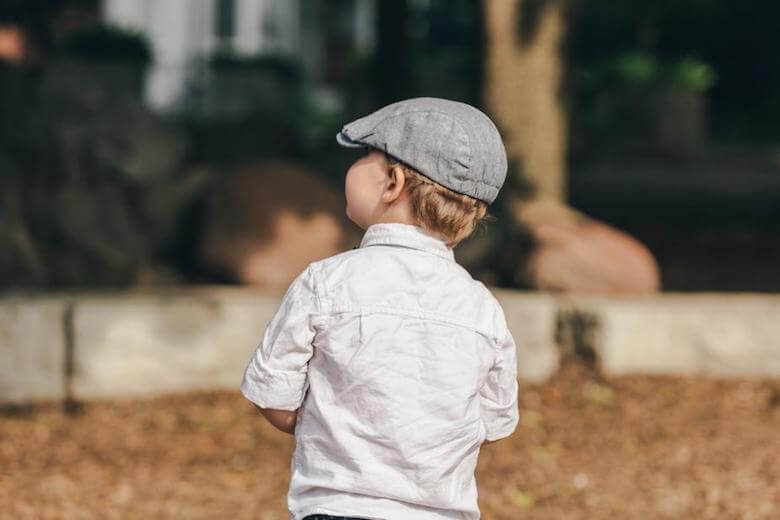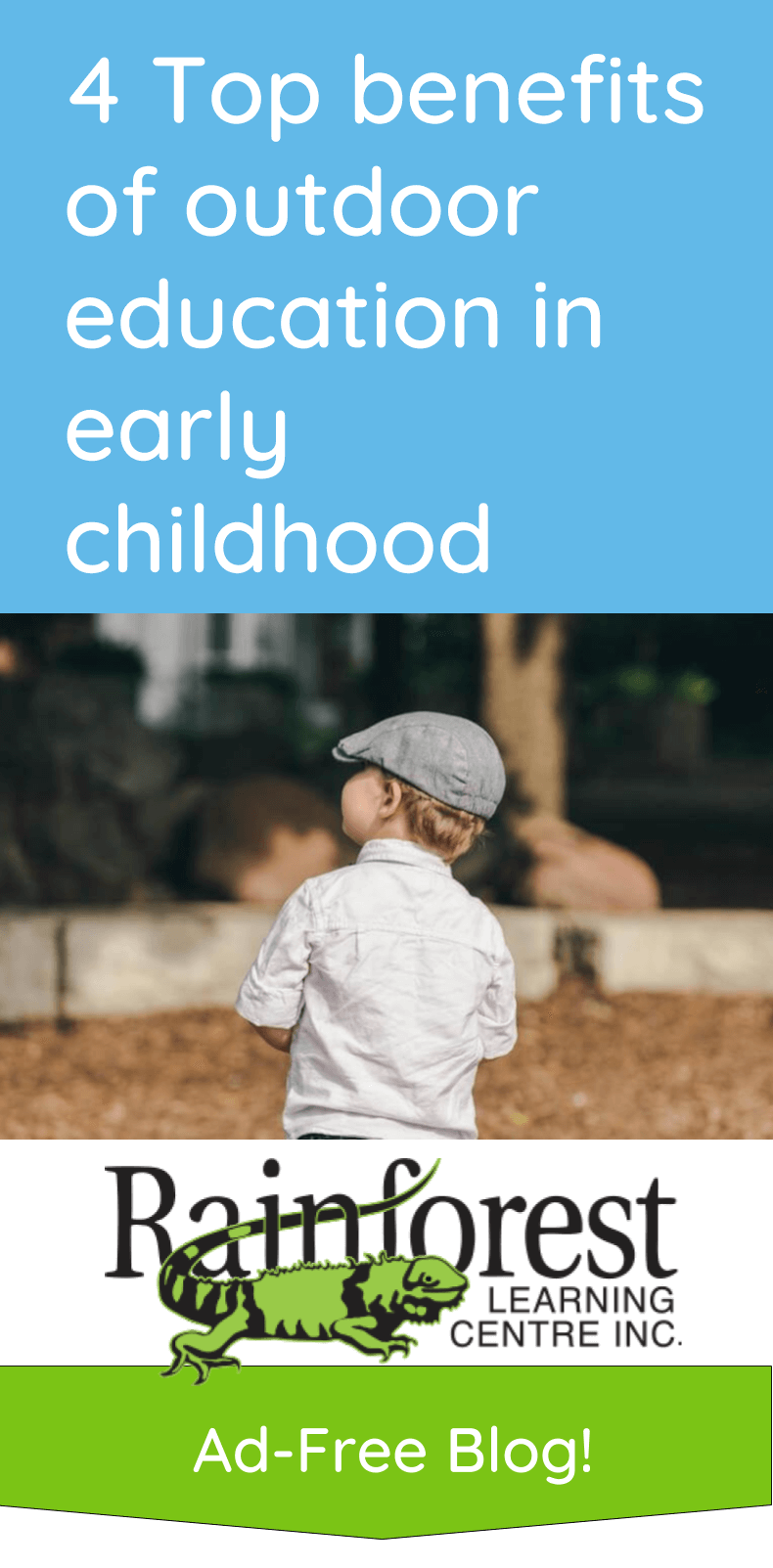
These days, parents and educators can be concerned about children spending too much time indoors, and with screens. Experts are beginning to question whether traditional, structured learning is best for young, developing minds. Have we lost touch with nature? Is this how we were meant to learn? And why are we so afraid of spending time outside, especially if the weather is bad? Well, as it turns out, there are benefits to outdoor education in early childhood, which have been documented, whether by research or convincing testimonials.
At our daycare and preschools in Vancouver, we don’t do outdoor-only education (sometimes called ‘forest schools’ and other names). These types of schools do exist in the world. But you could say they are on the ‘far end’ of outdoor education beliefs, with an all-indoor program on the other end. However, we believe there can be a balance between indoor and outdoor learning. And we are certainly proponents of giving kids adequate time to play and learn outside. We want them to be in touch with nature as much as possible.
In this article, we’ll explain the top 4 reasons to justify outdoor education for all kindergartens, preschools and daycares.
1) Outdoor education in early childhood promotes mental health
Many lovers of outdoor education point to research that shows how much nature can be a reliever of stress. It also helps with attention span. In fact, just breathing that forest ‘smell’ can help your immune system.
In older students, time in nature has also been used as therapy, to help reduce depression, heal from negative circumstances or learn about oneself. This is a great practice to start in early childhood, and surely can help in similar ways, but for the stresses that little ones face.
Another interesting point is that, while some parents are worried about the risks of injury from outside play, there is some merit to the idea that kids can learn to avoid those injuries better, if they know how to be careful about them in the first place. They can build confidence in their physical abilities that way, keeping them safer in the long run. Take a child who is afraid to climb a tree for instance. It’s scary as a parent to watch your kid wobble on branches, for sure. But kids who do this will develop mental focus and problem solving skills as they also learn balance, shift their weight and use motor skills to place their hands and feet in certain spots while climbing. By becoming good climbers, they reduce their risk of falling. It also gives them confidence; they’ve achieved something by climbing that tree, not least of which is overcoming a fear of heights.
2) Outdoor play learning in early childhood increases physical health through active lifestyles
This is an obvious one, but is bigger than you may, at first, realize. Physical health from spending time outdoors can span into various areas, and have positive side-effects later in life. This is especially true with early childhood outdoor play.
When preschoolers are in outdoor play areas, they can run, jump, climb and roll without restrictive walls or furniture in the way. They work up their heart rates and get ‘true’ exercise, which reduces risk of obesity, heart disease, diabetes and other related health problems in the long run.
They also strengthen their muscles and, like we mentioned above, they work on balance and motor skills, which are important for their development.
If you’re worried about getting dirty, cold or wet, some will say there is no need to be. As long as kids are dressed for the weather, they should be ok. That’s where quality, waterproof rain and snow gear come in handy during winter months (they won’t be naked little ‘Tarzans’ running around in negative-degrees weather, don’t worry!).
And regarding colds and flus, there are some who argue that germs and dirt are what kids need to stay healthy. Plus, indoor air quality may be just as risky for catching those types of sicknesses, if not more risky. (See articles linked to in this article for more on this).
Finally, an argument has also been made that being outside affects the human body clock, which can then help kids get a better sleep. And that, in turn, helps the immune system.
3) Educational topics can be taught outside just as well as they can inside, if not better
When you first think of a child’s education leaving the indoors, where there are desks, pencils and books, you might have a hard time imagining how academics could be possible ‘in the wild,’ where there is little control over the tools available to do the job of teaching.
Actually, that concept is a false one. Nature is full of instructional instruments. Let’s take a simple, common subject that is taught in early childhood classrooms: sizes and shapes. You can find all kinds of rocks, leaves and sticks in different sizes and shapes. You can also correlate them to descriptive words we have in English, such as the “circle” of a tree branch, or the “heart” and “oval” shapes of rocks. Leaves have “lines” and blades of grass have “points.”
As kids get older, you can also take science lessons outside, where they could learn about the biology of plants, or how animals grow and survive without our help (unlike domesticated pets).
What better way to teach kids about the importance of preserving nature, cleaning up trash, and recycling, than by showing them directly, outside, how our actions affect the earth? Here is one sample curriculum you can use for early learners. It teaches about trees and the benefits they give us and animals, including fruit, smells, and places to live.
If you really need a sit-down place to teach a lesson, you can do it on logs, rocks or on the plain ol’ grass. Yes, getting dirty is ok! But remember, proper weather wear is important for outdoor learning.
Now, when we hear about outdoor education, we often hear about ‘unstructured’ learning, or ‘child-led’ learning. This can make us think that school-time turns into an anarchist, free-for-all party, where nothing gets accomplished. But that’s not the case. Firstly, kids learn a lot through unstructured play (we’ll get to that below). Secondly, teachers still teach, but they do so based on the interests of the children. This way, kids will be more likely to engage with a teacher, and be inquisitive about the topic.
Maybe the preschool classroom finds icicles on the way to their learning logs in the woods. How did they get there? How did water become solid? Can we count how many icicles we see? These are great teachable moments for early childhood educators. And if things get dull, a teacher who is well-versed in emergent curriculum can still pull out a ‘magic wand’ – that is, a backup lesson that will instil knowledge into the kids, regardless.
4) Learning outdoors provides more opportunities for imaginative play and creative thinking
The organic materials we find in nature – even in our backyards – can provide a lot of stimuli for the imagination. As this article states, “a stick can be a gun, a boat or a pen.” You can play these games with many of nature’s provisions, and there are no definitions imposed on a child for what these natural objects should be. That then leads to “skills related to divergent thinking, creativity, problem solving, among others.”
Not only that, but children learn problem-solving skills and collaboration in the outdoors (also mentioned above in the section about mental health). As this description of an outdoor classroom shows us, “the children help one another navigate natural obstacles such as branches and prickly plants.”
In short, the open-ended opportunities for learning outside are endless. We believe it’s good for kids to learn to make their own fun, using what they have. This will teach them creativity, which can be applied in traditional academics too.
As we’ve seen, the benefits of outdoor education are hard to argue against. While there can be some risks and fears when letting kids run around in a place without boundaries, the pros far outweigh the cons. Plus, there are solutions when it comes to fears of getting sick or cold. And in a balanced curriculum, children still have inside play-time and learning. But that should not keep them cooped up in a ‘cage’ either.
Of course, early childhood educators who practice outdoor learning should also be reasonable. If weather is really restrictive, there is no reason to ‘force’ the outdoor thing, and we would never want any child to be uncomfortable or in any danger by being outside. Sometimes, staying inside is ok. This also goes for times when there aren’t enough teachers or assistants to supervise the outdoor play.
In cases where a child’s immunity is weaker, or there is some reason to be concerned about outdoor programming, doctors should always be involved, of course. A good preschool program should be flexible to coordinate with parents, and do what’s best for the child.
See more on our blog:
- What are the common types of play in childhood? Why are they important?
- Preschool activities to start, grow and maintain an edible classroom garden
- 5 Fun, purpose-driven walks to go on with daycare kids or preschoolers
- How to teach playground safety at daycare
- Tips to teach street and road safety at preschool
- Basic first aid and emergency response skills to teach in preschool
- What is Waldorf education and why does it matter when choosing a daycare?
